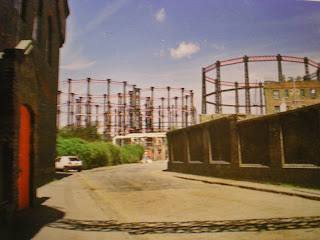While sunbathing in St James's Park late this afternoon, we turned to the subject of how people are governed, or how they govern themselves, in different societies. It was a mixture of welcoming in the summer, and desperately trying to extend the political boundaries beyond Johnson and his Tory-dominated London Assembly.
My opponent (for it was rather a clash of ideas) is, alas, a social democrat. Personally, I think he could do a lot more with his life - i.e. become a Marxist. But I must say, he raised rather a good question this evening, one that I was unable to bat away.
If Marx's theory of historical materialism states that human societies have moved from primitive communism to feudalism to capitalism, and are destined to progress via the dictatorship of the proletariat to advanced communism, what are the differences between primitive and advanced forms of communism which would preclude the circle simply re-commencing? Technology and knowledge would be two obvious starters. But how would they stop a latter-day communist society from returning to a feudalist or even capitalist structure? If you can enlighten me, please scribble away in the comments box.
*
As regular HL readers and other interested parties know, the Bolivian government under President Evo Morales is attempting to reduce the structural, racial and economic inequalities that have risen unchecked in the country for many decades.
One of the government's most important policies has been land reform. The land in eastern Bolivia hosts much of the country's subsoil resources and manufacturing industry. It is also owned by a tiny minority of people, which means profits quickly flow out of Bolivia and into the hands of the rich, rather than being shared by the whole country. The Morales government has gone some way in reforming these iniquities, but
yesterday voters in the eastern Santa Cruz province voted overwhelmingly in favour of regional autonomy. Naturally, the citizens of this wealthy, mostly white province do not wish to share their riches with their poorer, darker skinned fellow citizens. The referendum was unofficial and probably illegal, but nevertheless If the bid for regional autonomy was successful, it would scupper Morales's plans for redistribution.
Such proprietorial apartheid is a natural result of the sort of capitalism which increases inequalities in wealth and opportunities (that's
any sort of capitalism, right?). On a smaller scale, it can be seen in any western city's gated communities; on a larger scale, it can be seen in Israel which, in the words of Naomi Klein, "has turned itself into a fortified gated community, surrounded by locked-out people living in permanently excluded red zones."
All this is linked to my earlier question, for if Bolivia's elite will not give up even a small proportion of their wealthy, how might any positive form of Marxism ever be implemented, aside from a worldwide, systemic and nationally simultaneous eradication of the capitalist system?
*
Finally, on the subject of red and green zones, the logical end result of the Iraq War:

This is how some military planners in the US see
the future of Baghdad's notorious Green Zone.
A $5bn (£2.5bn) tourism and development scheme for the Green Zone being hatched by the Pentagon and an international investment consortium would give the heavily fortified area on the banks of the Tigris a "dream" makeover that will become a magnet for Iraqis, tourists, business people and investors. About half of the area is now occupied by coalition forces, the US state department or private foreign companies.The US military released the first tentative artists' impression yesterday. An army source said the barbed wire, concrete blast barriers and checkpoints that currently disfigure the 5 sq mile area would be replaced by shopping malls, hotels, elegant apartment blocks and leisure parks. "This is at the end of the day an Iraqi-owned area and we will give it back to them with added value," said the source, who requested anonymity.There's the solution to Oriental barbarism in a nutshell: shopping malls, hotels, elegant apartment blocks and leisure parks. It sounds like the idea most people have of Dubai, where according to a colleague the government has done a fantastic job of hiding the very people who create this wealth and never see a penny of it. It also sounds like the proposals for the "regeneration" of the King's Cross / St Pancras site, on which I will write a lot more soon. That's because all three adhere to the logic of our times: the fading logic of neoliberalism, determined to heave one last hoorah before the whole farce comes crumbling to its knees.

















































